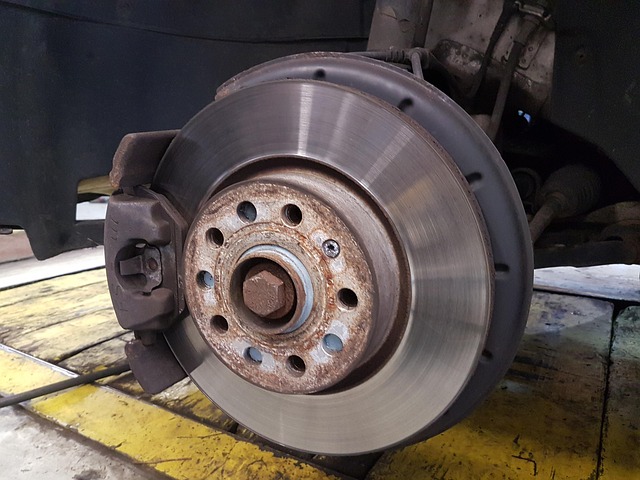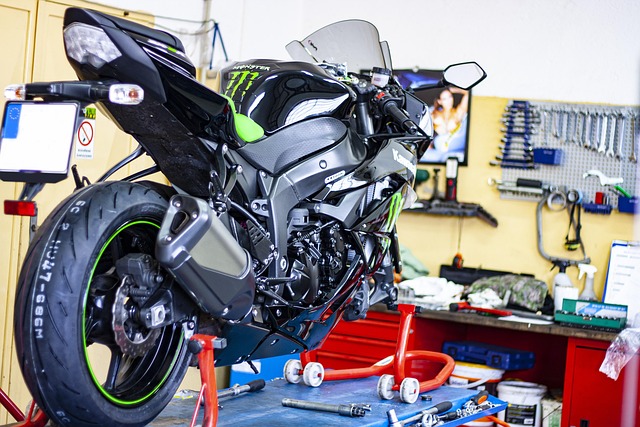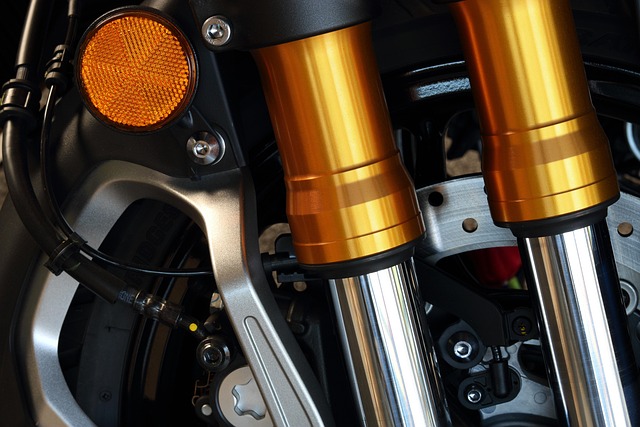Advanced brake systems, including air brakes and ESC, offer enhanced control and safety for commercial vehicles. Disc brakes, favored for their performance and cooling efficiency, are preferred over drum brakes, which require more maintenance. Anti-lock braking, electronic brake distribution, and ADAS improve stopping power and safety. Heavy-duty applications may opt for drum brake conversions. Selecting the right select brake replacements involves understanding vehicle needs, driving style, and local shop expertise to ensure optimal performance and safety.
Modern brake technology has evolved significantly, offering drivers advanced safety features and improved performance. In this article, we’ll unravel the intricacies of contemporary brake systems. From understanding the basics to exploring advanced technologies like ABS, we provide an in-depth look at what makes brakes tick. Furthermore, we’ll delve into the different types of brake replacements, focusing on disc vs drum, helping you make informed decisions when it comes to selecting brake replacements.
- Understanding Modern Brake Systems: An Overview
- Types of Brake Replacements: Disc vs Drum
- Advanced Technology: ABS and More
- Selecting the Right Brake Upgrade: Factors to Consider
Understanding Modern Brake Systems: An Overview

Modern brake systems have evolved significantly from their traditional counterparts, incorporating advanced technologies to enhance safety and performance. At the heart of this evolution lies a complex interplay of mechanical, hydraulic, and electronic components working in harmony to ensure precise control over vehicle deceleration. Understanding these systems is crucial when considering select brake replacements, as different solutions offer varied advantages tailored to specific driving needs and budgets.
One prominent trend in modern brake technology is the shift towards air brake solutions, which leverage compressed air to apply pressure on brake pads or shoes, providing powerful stopping capabilities. This approach not only offers superior control and responsiveness but also contributes to more affordable brake replacements, especially for commercial vehicles. Alternatively, some systems integrate electronic stability control (ESC) technologies, enabling dynamic adjustments during critical maneuvers, further enhancing safety margins. By keeping up with these innovations, drivers and mechanics alike can leverage the benefits of advanced braking systems while choosing cost-effective solutions like brake pads replacement to maintain optimal vehicle performance.
Types of Brake Replacements: Disc vs Drum

When it comes to selecting brake replacements, understanding the differences between disc and drum brakes is key. Disc brakes have become the more popular choice in modern vehicles due to their superior performance and ease of maintenance. They use a metal disc or rotor that’s cooled by air and is equipped with pads that press against it to slow down the wheel rotation. This design allows for quicker stopping distances, better heat dissipation, and reduced wear on the brake components.
On the other hand, drum brakes house brake padding inside a cylindrical housing, pressing against a drum that rotates with the wheels. While they were once prevalent in many vehicles, drum brakes are less common today as they tend to overheat more easily, leading to potential brake sensor issues and resulting in brake noise diagnosis. They also require more maintenance since the pads wear down faster and need regular replacement. For these reasons, many vehicle owners opt for disc brakes when it comes time for brake replacements, ensuring better safety and peace of mind from their local brake shops.
Advanced Technology: ABS and More

In today’s modern automotive landscape, advanced brake technology is revolutionizing safety and performance. Anti-lock Braking Systems (ABS) have long been a cornerstone of this evolution, preventing wheels from locking up during hard braking, thereby enhancing control and reducing skid risks. But ABS is just the beginning; contemporary brake systems incorporate various sophisticated technologies. For instance, Electronic Brake Distribution (EBD) adjusts brake pressure to each wheel based on traction needs, ensuring optimal stopping power in all driving conditions.
Additionally, modern vehicles often feature advanced driver assistance systems (ADAS) integrated with brakes, such as Emergency Braking and Collision Mitigation systems. These technologies use sensors and cameras to detect potential hazards and automatically apply brakes to avert or lessen the impact of collisions. For those seeking superior braking performance, especially in heavy-duty applications, drum brake conversions offer enhanced stopping power and heat dissipation compared to traditional disc brakes. Local brake shops cater to these needs, providing tailored solutions including select brake replacements, ensuring vehicles are equipped with the most advanced and reliable braking technology available.
Selecting the Right Brake Upgrade: Factors to Consider

When considering a brake upgrade, selecting the right replacements is crucial for both performance and safety. Several factors come into play when choosing new brakes, especially with modern technology offering various options like disc brakes and custom kit setups. Firstly, understanding your vehicle’s make and model is essential as different cars have unique braking requirements. Some vehicles may require specific brake pads replacement to match their performance characteristics.
Additionally, drivers should assess their driving style and intended use of the vehicle. For example, off-road enthusiasts might opt for robust custom brake kits designed for rugged conditions, while everyday commuters could benefit from high-performance disc brakes offering shorter stopping distances. Local brake shops can provide valuable insights, guiding customers through options, ensuring compatibility, and helping to achieve optimal braking performance without compromising safety.
Modern brake technology has evolved significantly, offering drivers advanced safety features and improved performance. By understanding different types of brake systems, like disc and drum brakes, and exploring innovations such as Anti-lock Braking Systems (ABS), we can make informed decisions when selecting brake replacements. When considering upgrades, keep in mind factors like vehicle compatibility, environmental conditions, and your driving style to ensure optimal braking efficiency and safety on the road. Remember, choosing the right brake upgrade is a crucial step in maintaining control and enhancing the overall driving experience.
